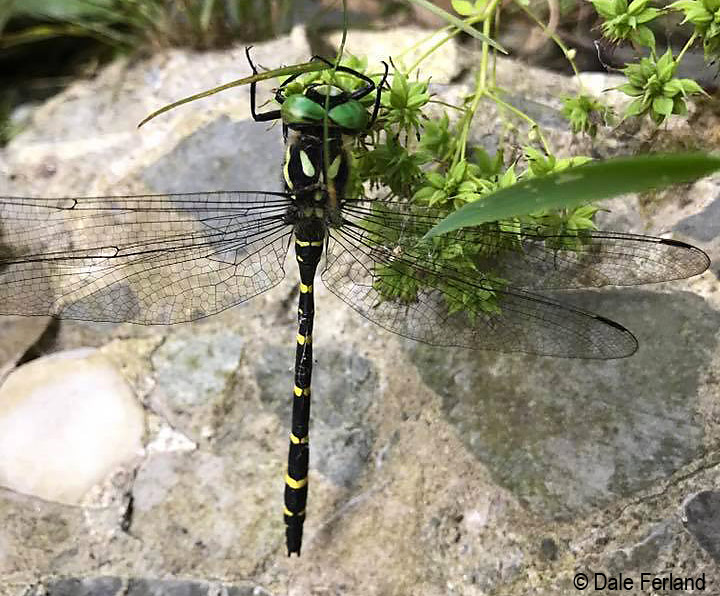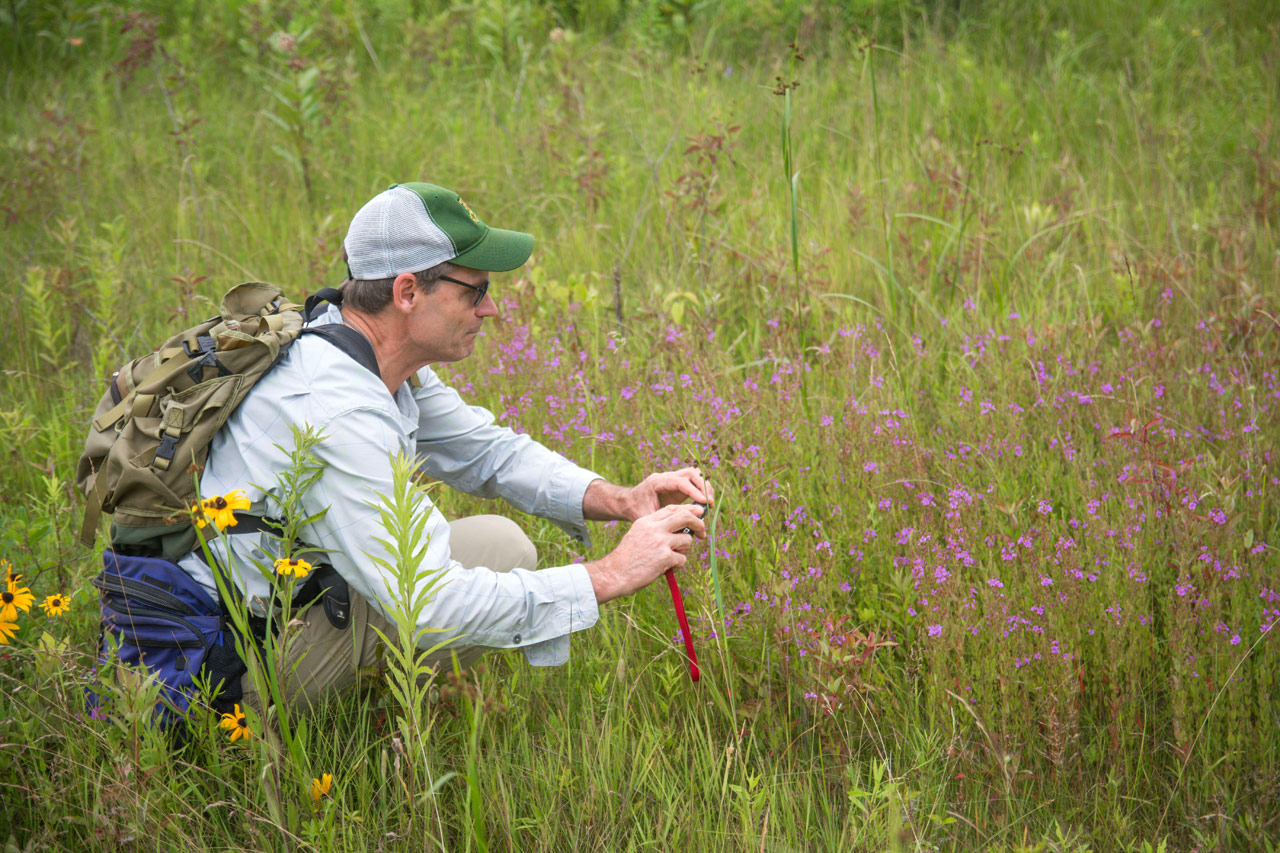A Tiger in Vermont

Congratulations, Vermont. You’ve got a new dragonfly — Tiger Spiketail (Cordulegaster erronea).
This handsome insect flies on streams and rivers east of the Mississippi, and rarely this far north. Dale Ferland, an angler who likes to poke around rivers, snapped that photo above on Monday from the Black River in Springfield. Kelly Stettner, who’s doing great work educating folks about the river, posted Dale’s image to iNaturalist, where I first saw it and, you know, kinda lost it. The spiketail turns out to be the 100th dragonfly species we know of here in Vermont (we’ve also got 44 damselfly species).
Spiketails are so named for the females, which lay their eggs by hovering and plunging their spiked ovipositors, like sewing machines, into flowing water. We’ve got three other spiketail species in Vermont (which you can scroll through and view at the Vermont Dragonfly and Damselfly Atlas).
Whether we’ve got a resident population of Tiger Spiketails, or whether this is a one-off, remains to be seen. Stay tuned. In any event, way to go, Dale!
Meanwhile, we’ve also got a new plant in the state … sort of. I retell the story from a news release issued by the good folks at the Vermont Fish and Wildlife Department and the Vermont chapter of The Nature Conservancy:
Everett Marshall was hiking with his wife, Deb Parrella, when she noticed the small purple flowers of winged loosestrife (Lythrum alatum) while crossing a boardwalk through a wet meadow in Ferrisburg. Everett and Deb are botanists.
Winged loosestrife, a native plant, is closely related to purple loosestrife, which is native to Europe and Asia and is a lovely but nasty invasive. A small number of winged loosestrife plants were last observed by a botanist in Middlebury in 1979. Before that there were only eight records of the plant in the state, the most recent occurring in 1933.
“It’s exciting to see this plant once again recorded in Vermont,” said Everett in the news release, “and demonstrates why we’re continually working alongside our partners and members of the public to document the diversity of species in the state.”
Deb and Everett found the plant at Raven Ridge Natural Area, a 365-acre property owned by The Nature Conservancy — a site visited by many skilled naturalists who had managed to overlook this plant (or at least dismiss it as the invasive). It goes to show ya: sometimes it pays to take a closer look, to be open to new discoveries among the prosaic … and to beware of the perils of the expected.
Way to go, Deb and Everett! (That’s Everett and the loosestrife below.)


I have also seen this dragonfly in Monkton, VT. I have photos of it as well as the actual specimen as it died in our pool.
Congrats on the erronea!
Beautiful creature! Thank you for posting this photo so we can celebrate an otherwise invisible bit of glory.